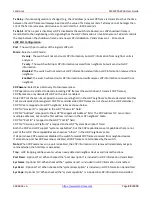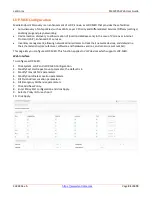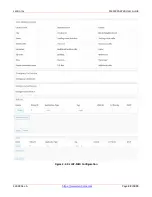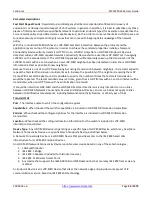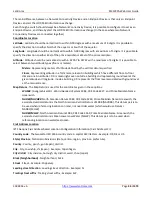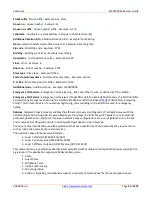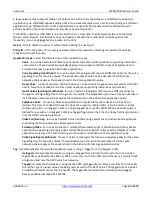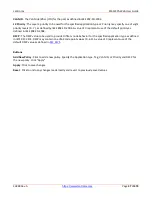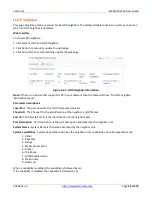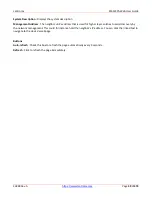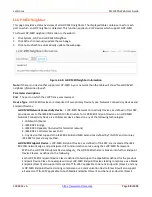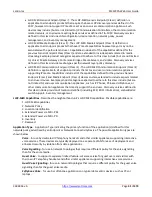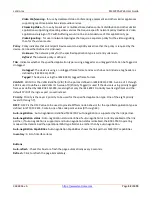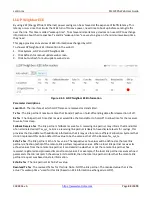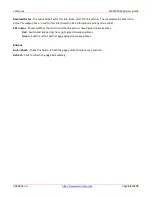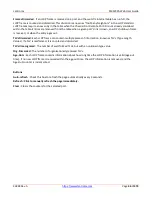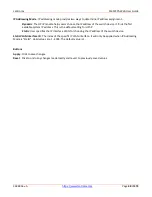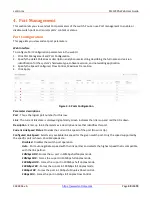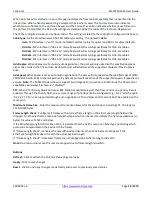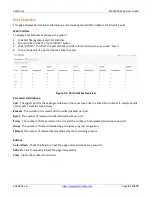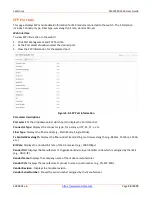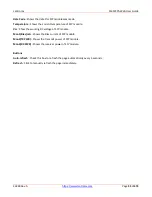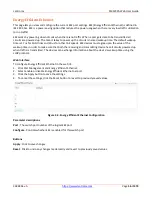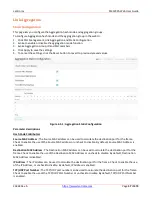
Lantronix
SM12XPA Web User Guide
33848 Rev. A
Page
42
of
473
Video Conferencing
- for use by dedicated Video Conferencing equipment and other similar appliances
supporting real-time interactive video/audio services.
Streaming Video
- for use by broadcast or multicast based video content distribution and other similar
applications supporting streaming video services that require specific network policy treatment. Video
applications relying on TCP with buffering would not be an intended use of this application type.
Video Signalling
- for use in network topologies that require a separate policy for the video signalling
than for the video media.
Policy
: Policy indicates that an Endpoint Device wants to explicitly advertise that the policy is required by the
device. Can be either Defined or Unknown:
Unknown
: The network policy for the specified application type is currently unknown.
Defined
: The network policy is defined.
TAG
: Indicates whether the specified application type is using a tagged or an untagged VLAN. Can be Tagged or
Untagged.
Untagged
: The device is using an untagged frame format and as such does not include a tag header as
defined by IEEE 802.1Q-2003.
Tagged
: The device is using the IEEE 802.1Q tagged frame format.
VLAN ID
: VLAN ID is the VLAN identifier (VID) for the port as defined in IEEE 802.1Q-2003. A value of 1 through
4094 is used to define a valid VLAN ID. A value of 0 (Priority Tagged) is used if the device is using priority tagged
frames as defined by IEEE 802.1Q-2003, meaning that only the IEEE 802.1D priority level is significant and the
default PVID of the ingress port is used instead.
Priority
: Priority is the Layer 2 priority to be used for the specified application type. One of the eight priority
levels (0 through 7).
DSCP
: DSCP is the DSCP value to be used to provide Diffserv node behavior for the specified application type as
defined in IETF RFC 2474. Contain one of 64 code point values (0 through 63).
Auto-negotiation
: Auto-negotiation identifies if MAC/PHY auto-negotiation is supported by the link partner.
Auto-negotiation status
: Auto-negotiation status identifies if auto-negotiation is currently enabled at the link
partner. If Auto-negotiation is supported and Auto-negotiation status is disabled, the 802.3 PMD operating
mode will be determined the operational MAU type field value rather than by auto-negotiation.
Auto-negotiation Capabilities
: Auto-negotiation Capabilities shows the link partners MAC/PHY capabilities.
Inventory
: A list of interface items.
Buttons
Auto-refresh
: Check this box to refresh the page automatically every 3 seconds.
Refresh
: Click to refresh the page immediately.


